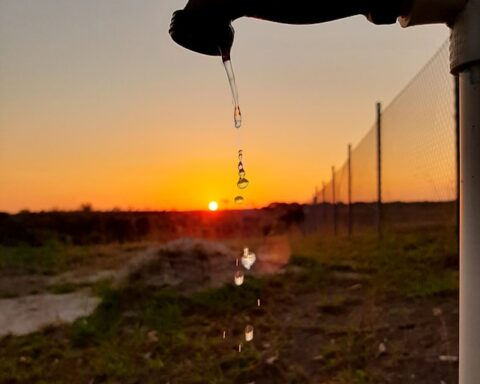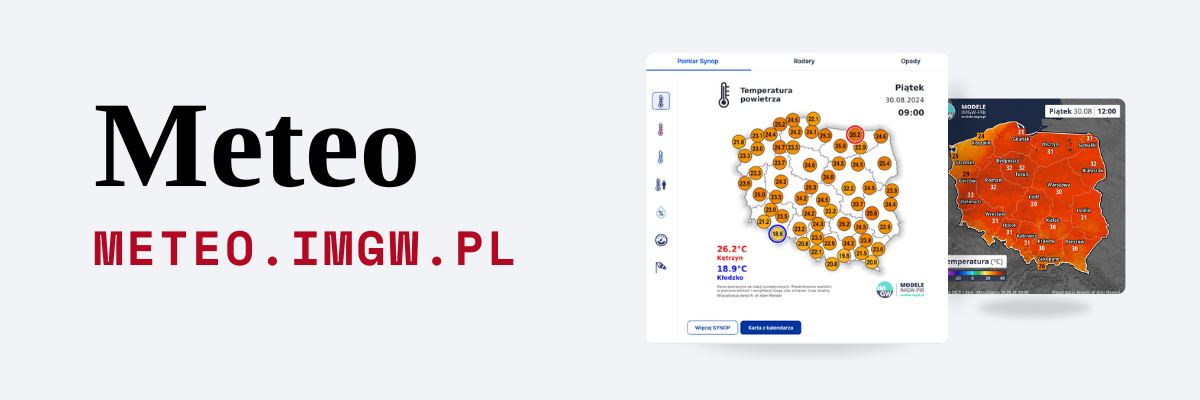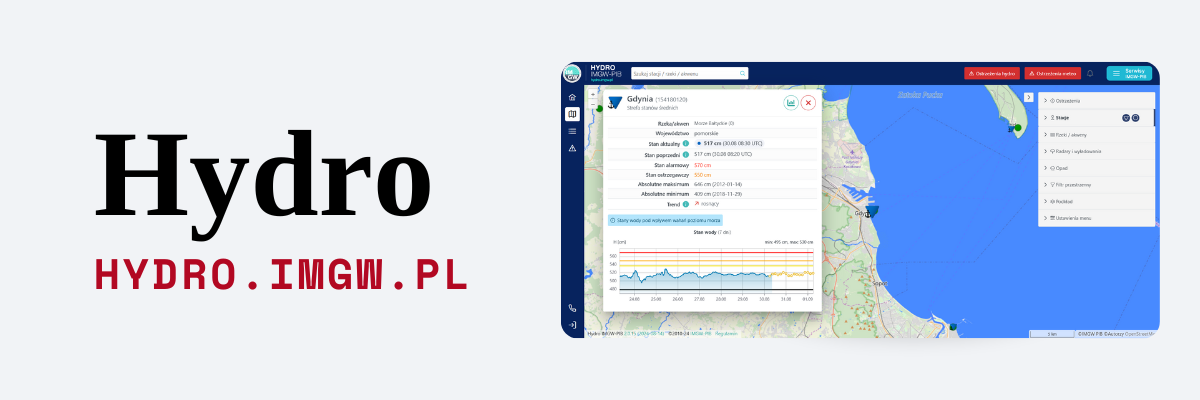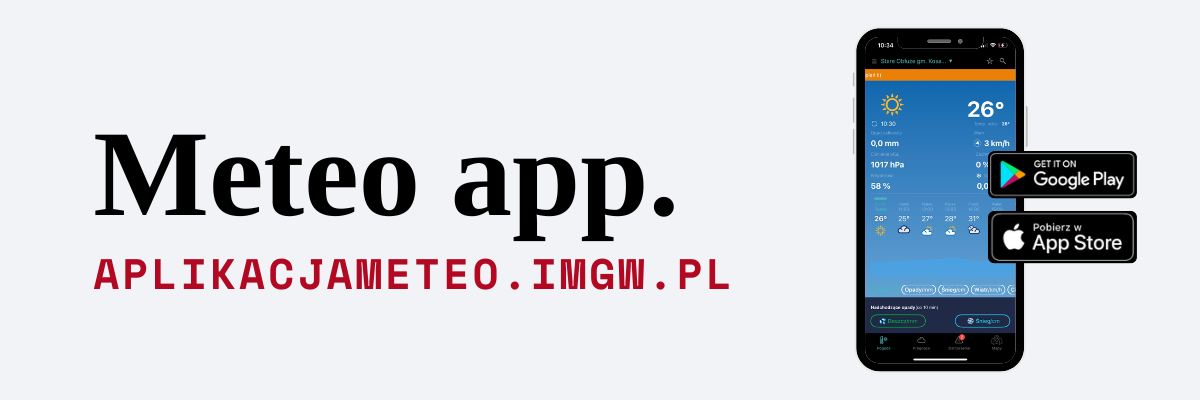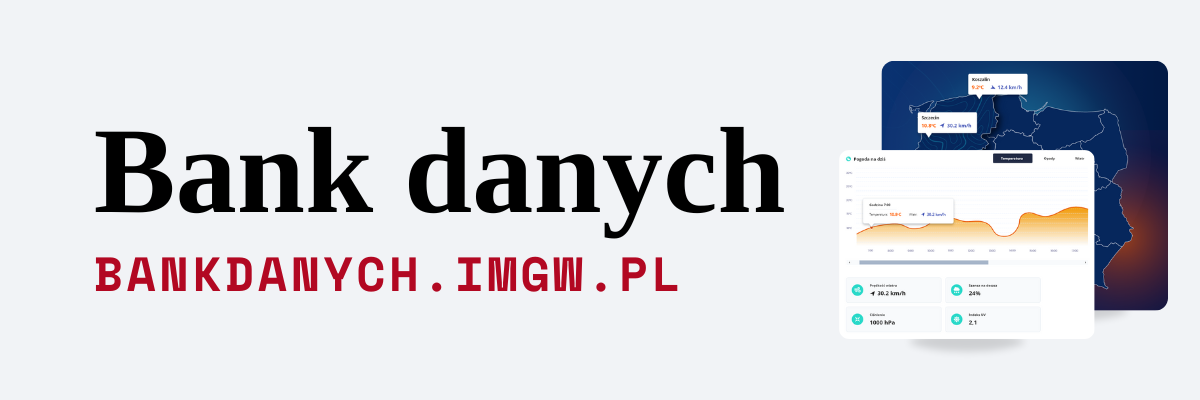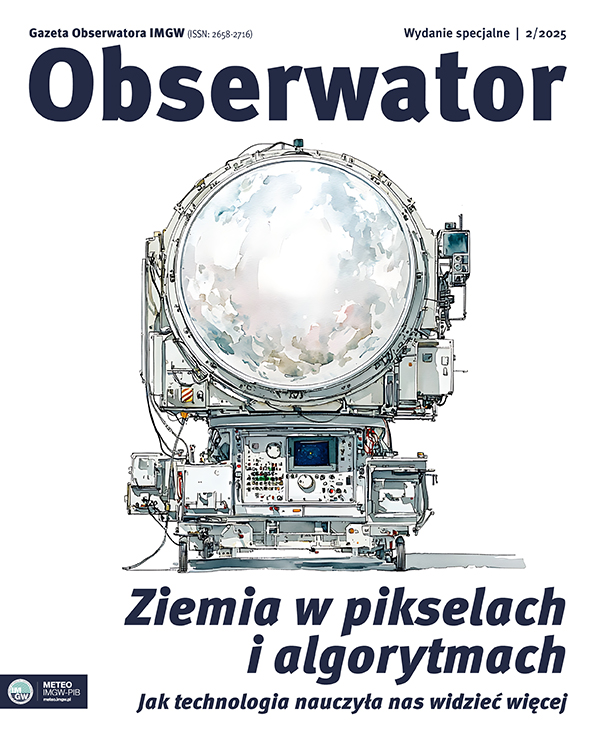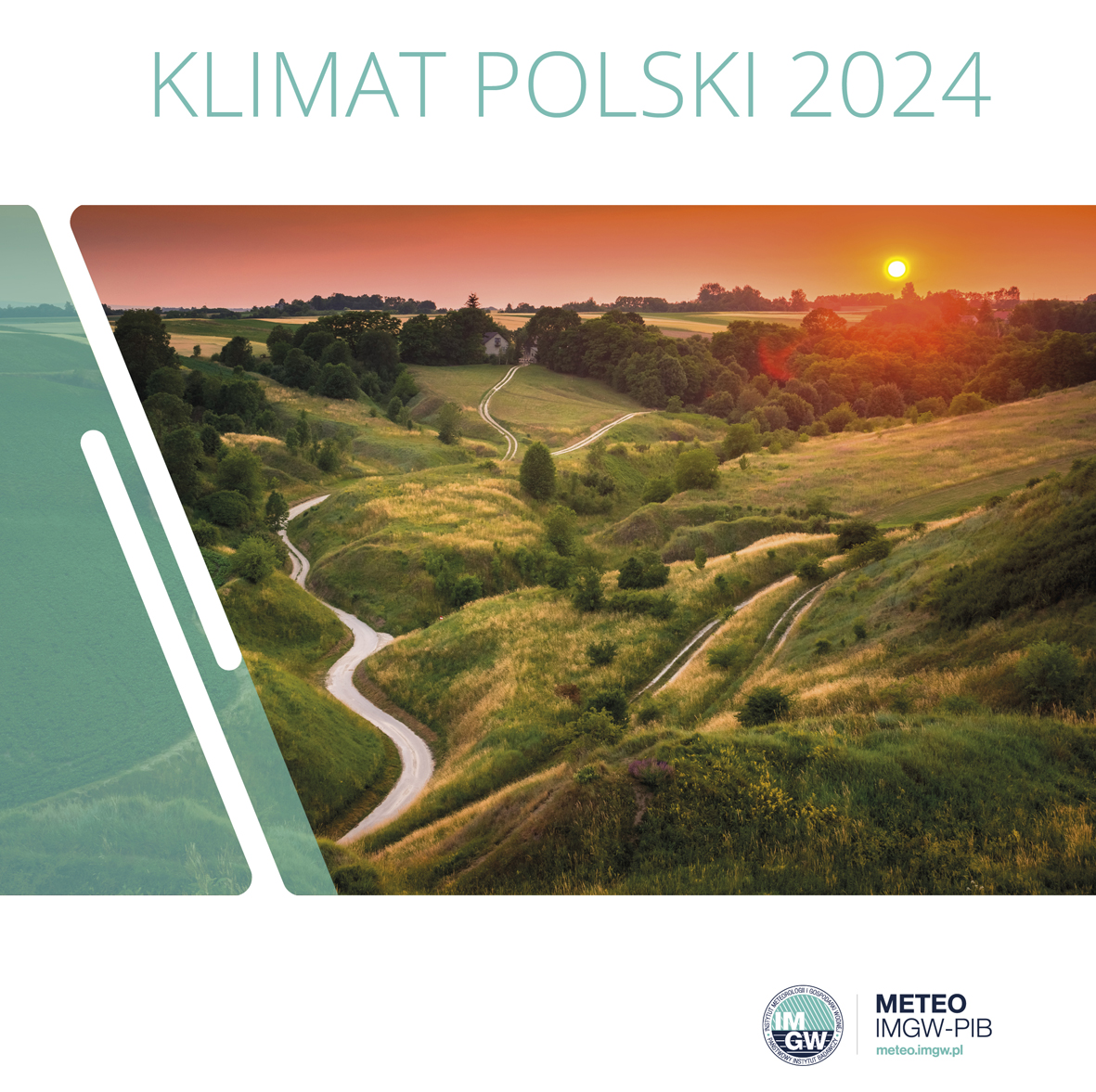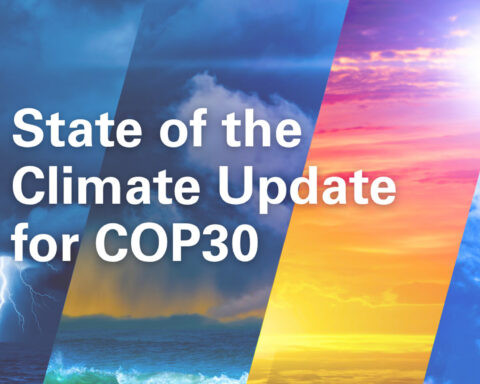Weather forecasting using numerical models represents one of the most significant scientific achievements in the short-, medium- and long-term prediction of the state of the atmosphere. However, such spectacular progress would not have been possible without the effort of a community of researchers, engineers, and information technology specialists who have been making crucial discoveries and improvements for almost 100 years. Among them, there were employees of Polish research and development institutions, including experts from the Institute of Meteorology and Water Management.
AUTHOR: Jan Wacław Parfiniewicz, IMGW-PIB/Meteorological Modelling Centre
The first numerical weather prediction (NWP) was calculated using the ENIAC electron-tube digital computer, innovative at the time, located at Princeton University (USA). Its authors were J.G. Charney, R. Fjortoft, and J. von Neumann (1950). The forecast of the geopotential height (pressure surface above mean sea-level) of 500 hPa for 24 hours was obtained from the equivalent-barotropic vorticity equation model. The theoretical basis of the model was developed by Charney in 1949 and preceded by the work of C.G. Rosby, which appeared in 1939. The numerical method used (including stability analysis of the finite difference scheme) resulted from partially confidential work carried out in Los Alamos by von Neumann. Rosby’s work was influenced by his contemporaries F. Exner and H. Ertel (1942), H. Philips (1939), E. Eady (1949, 1952), A. Eliassen (1949), J. Petterssen and J. Bjerknes (1904), the founder of synoptic meteorology and the theory of the development of atmospheric fronts).
The foundation of NWP and dynamic meteorology is considered to be the work of V. Bjerknes from 1904, in which the weather forecast was formulated as an initial and boundary value problem based on mathematical physics (Cauchy’s issue). In turn, von Neumann’s works on numerical methods were preceded by the fundamental pieces of H. Philipps and N. Wiener (1923), R. Courant, K.O. Friedrichs, and H. Lewy (1928), as well as L.F. Richardson (1911, 1922, 1926). The big unfortunate in this race was Richardson, the author of the basis of finite difference schemes analysis for partial differential equations, who was the first to calculate the pressure field forecast using hand-held calculators. The result, burdened with a gross error, caused his heroic effort to be disregarded by his contemporary meteorologists.
Development of the NWP since the 1950s. Three main phases can be conventionally distinguished in the activity related to numerical weather forecasts conducted since the second half of the 20th century. The period 1950-1965 was the phase of relatively weak computers with exotic names: ENIAC, BESK, BESM, later IBM, Strela, Mark II, and models limited by the number of levels and assumptions of quasi-geostrophic and adiabatic (without water vapour phase change). The decade, counted from 1965 to 1975, was characterised by the development of computing power and the establishment of large forecasting centres: in Washington, Bracknell, Offenbach, Moscow, Tokyo, and Melbourne. The European Centre for Medium-Range Weather Forecasts (ECMWF) was also established at that time. There was a transition to the full (so-called primitive) system of equations (Shuman 1960; Hinkelman 1965), applications to climate theory, and gradual consideration of phase transitions (microphysics). Methods for objective automatic control and analysis of an increasing amount of information, including satellite observations, were developed. In 1975, the era of supercomputers began. The intensive development of numerical methods and data assimilation techniques, including complex variational methods, led to the development of multi-level global and local scale models (Limited Area Model, LAM) with full physics. The works used radars and solving inverse problems. A centre in Toulouse was established, and the Moscow centre lost its importance. A negative phenomenon was the progressive concentration of technical and intellectual potential, the commercialisation of NWP, and competition inhibiting the free exchange of creative ideas.
Contribution to the development of NWP at the IMGW
The Wirth era, 1963-1978. Zygmunt Wirth, a graduate of the University of Warsaw, was the first in Poland to begin the NWP experiments in 1963. Following the example of the work of J.G. Charney (1949) and G.P. Cressman (1959), under the auspices of Feliks Wirkus (who adapted the graphical method to the forecast of the 700 hPa geopotential height), Wirth launched the offline barotropic model on the first „exotic” computers in Poland – the Ural-2. It was a electron-tube colossus computer belonging to the Polish Academy of Sciences, occupying half a floor of the Palace of Culture and Science and on the Elliot computer with a carousel-pendulum tape memory in Międzylesie. Then, in cooperation with E. Maron and A. Misiukiewicz, he transferred the model to the IMGW’s second computer UMC-10 (the first one, UMC-1, was unsuitable to perform computations), then to Odra 1204 and Odra 1305.
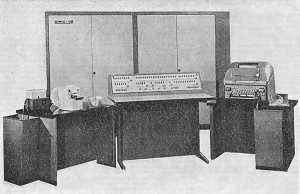
The model’s results were better than the 24-hour graphical forecast, and since 1970 the model has been operated once a day. Data were read from synoptic maps and the model domain covered a large part of the Atlantic in the west and reached the Urals in the east. At the same time, research was conducted on neutralising the negative influence of boundary conditions. Programs were initially written in internal languages (W-20), then in ALGOL, and finally in Fortran. At that time, also the WWW program started to work, which, within the WMO structures, allowed for linking NCM models to the models of regional centres.
As the head of the ETO, Wirth’s ambition was to centralise the management of IMGW’s computing infrastructure, connect the mainframe computer with the IMGW communication node and implement 24/7 operations supporting NWP. In this concept, IT was a tool to link the substantive activity of the entire IMGW. Wirth gathered a group of highly qualified programmers and IT specialists. In addition to the aforementioned Maron and Misiukiewicz, additional specialists worked for him, among others W. Czernuszenko, T. Sobczyk, J. Czechowicz and B. Jakubiak. J. Karpiński, the creator of the ZAM and MOMIK microcomputers, soon joined the team. Together with Sobczyk, he worked on the computerisation of teletype communication (together with the unforgettable „cichociemny” [silent and senn] Henryk Ostrowiński).
The structure of the ETO consisted of IT units handling forecasts (short-range and long-range meteorological forecasts, agro- and hydrological forecasts), an ICT group, a yearbook group, and operation. The entire team was headed by S. Reinchart. From 1975, the team encountered serious problems in implementing Wirth’s assumptions – starting with the methodology of synoptic interpretation of the NWP, through political situation making contact with the West difficult, ending with the departure of ETO employees to professional establishments and the spectre of total computerisation with PC-type systems. Finally, the direct cause of the collapse of the idea of centralised mainframe computers (horse computers) was Wirth’s conflict with Odra operators refusing to work at night.
Predict era, 1975-1985. The concept of a fully automated NWP system implemented on Odra 1305 was strictly dependent on the Iljin-Ruchovec two-parameter baroclinic model provided by a Russian team from St. Petersburg. Initial processing of teletype tapes was developed by T. Sobczyk’s associates (E. Sosnowska and W. Piętak). The so-called complex data control method was created by J. Parfiniewicz (1975) under the direction of L.S. Gandin, and the method of optimal interpolation was adapted for objective analysis (Ol, Gandin 1963). B. Jakubiak and W. Sławiński were part of the team of programmers..
Impressive IT achievements gradually revealed logistical deficiences. It was a period when Russian technology began to diverge from Western technology. The technical shortcomings were made up with sophisticated concepts, including the creation of complicated NWP schemes. It was possible due to the well-prepared scientific personnel still anchored in the achievements of the St. Petersburg Academy (Gandin, a student of Yudin, Yudin – Kibel, Kibel – Fridman, Fridman – Czapłygin, Czapłygin – Żukowski, who in turn drew from Euler and Bernoulli who were brought to Russia by Peter I). The level of Russian researchers is evidenced by the fact that a considerable number of them emigrated to the West in the 1980s, where they held prominent positions in the scientific community.
While the works devoted to the improvement of the low-parameter model (which the author conducted together with L.V. Ruchovec, 1977-1981) are of limited practical significance today, the solutions related to data control (1973-1981) presented at that time remain valid (the concepts of Lorentz (1990) with the assumption of a priori knowledge of the remaining big errors are debatable) and getting acquainted with the OI technology allowed for their creative application (1983-1998). K. Haman pointed to the dangers of becoming dependent on Russian technical know-how. The abandonment of the Wirth concept, lower forecast quality than German and English ones, and the coming of the PC era resulted in the abandonment of the Predict project and suspension of the development of NWP at the IMGW.
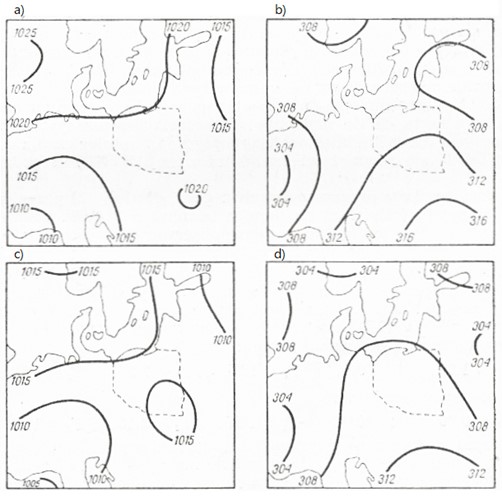
Development after 1985. Euphoria related to access to PC-type computers resulted in the development of automatic systems for meteorological information processing at the IMGW. T.S. Group (later T&S) created the assistance system for forecasters (SWS), S. Kozłowski and P. Ignatowicz launched POGODA system. Both tools used elements of control and analysis developed in the Predict project. As part of cooperation with WMO, the MSDAD and SVARD systems were created (1987-1991). The main emphasis in this work was on the visualisation of scalar and vector fields, which allowed the development of original algorithms calculating isolines and streamlines. In 1994, a team consisting of A. Kadłubowski, L. Herman-Iżycki, M. Lazanowicz, and A. Chmielewski implemented RADMET – a tool for interpreting large-scale forecasts via GTS. Initially, RADMET was very popular as a system addressed directly to the end user, bypassing weather forecasters. However, when the CRAY supercomputer was launched at ICM UW and the LAM UKMO model could be applied, L. Herman-Iżycki resigned from work on the RADMET system and joined the ICM together with B. Jakubiak. In turn, A. Kadłubowski worked on the hydrological model based on the de Saint-Venant principle. At that time, J. Parfiniewicz devoted himself to developing the methodology of radar data assimilation (1996-1998), as well as applying the concept of potential vorticity to the analysis and diagnosis of particularly intense meteorological processes (that have not been lacking since the storm and flood of 1997). Meanwhile, in Krakow, the team led by M. Jerczyński launched the French LAM model (ARPEGE / ALADIN). As part of the SMOK project concept, the implementation of a new generation non-hydrostatic model obtained from DWD (LM) was planned .

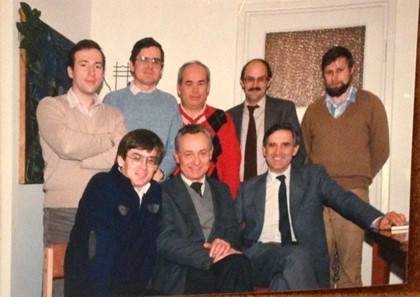
At that time, the environmental support for the work carried out at the IMGW were provided by the following scientific institutes: the Institute of Geophysics of the Warsaw University, the Institute of Geophysics of the Polish Academy of Sciences, and IIS of Warsaw University of Technology. In this context, successes on the international scale should be noted by many scientists, including by P. Smolarkiewicz (numerical methods), P. Flatau (radiation), Z. Sorbjan, L. Łobocki (boundary layer), M. Uliasz, P. Bartnicki (diffusion of pollutants) and W. Grabowski (microphysics, climate models). Environmental seminars conducted at IGF UW under the direction of K. Haman and with the participation of J. Borkowski undoubtedly contributed to the improvement of the level of work carried out at the IMGW.
The text has been written thanks to the initiative, substantive and editorial support of Dr. Andrzej Wyszogrodzki, for which I sincerely thank him.
Author: Jan Wacław Parfiniewicz | Meteorological Modelling Centre, IMGW-PIB.
Main photo: Brandon Morgan | Unsplash.


